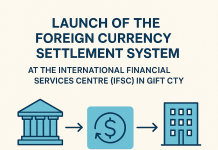The rapid digitization of financial services has changed how organizations verify and protect user identities. Traditional Know Your Customer (KYC) methods, once sufficient for compliance, are now proving too static for the modern threat landscape.
To counter evolving cyber risks and ensure real-time compliance, institutions are shifting toward continuous authentication, also known as progressive KYC (pKYC). This innovative approach moves identity verification from a one-time task to a continuous, adaptive process.
Why Traditional KYC Falls Short
Conventional KYC involves verifying a customer’s identity only at onboarding. While this process checks basic regulatory boxes, it doesn’t account for changes in a customer’s risk profile over time.
Key limitations of traditional KYC include:
- Static verification – Once a user is verified, the data often becomes outdated.
- High operational costs – Manual reviews and periodic KYC refreshes are resource-intensive.
- Fraud vulnerability – Criminals exploit the gaps between reviews.
- User friction – Customers face repetitive requests for documentation and long processing times.
These pain points have driven the evolution toward continuous authentication, a smarter, real-time approach to identity management.
What Is Continuous Authentication?
Continuous authentication continuously validates a user’s identity throughout their interaction with a system, not just at login. It uses a mix of behavioral, biometric, and contextual signals to assess whether the person behind an account is genuine.
Key data points include:
- Device intelligence – IP address, browser fingerprinting, and device behavior.
- Behavioral biometrics – Typing rhythm, mouse movement, or touchscreen gestures.
- Transaction monitoring – Spending habits, frequency, and transaction size.
- Location data – Geolocation and access patterns.
AI and machine learning models process these signals in real time, calculating a risk score for each action. If behavior aligns with expected patterns, the user’s session continues uninterrupted. Suspicious activity triggers additional checks or multi-factor authentication (MFA).
This approach reduces fraud, improves user experience, and ensures compliance without manual intervention.
Progressive KYC (pKYC): The Evolution of KYC
Progressive KYC, or pKYC, extends continuous authentication into the compliance realm. It focuses on maintaining live, up-to-date customer profiles instead of static, outdated records.
For example:
- A customer’s change in address or banking activity automatically updates their KYC profile.
- AI-powered monitoring detects risk changes and triggers enhanced due diligence when needed.
- Compliance teams act only when alerts indicate genuine anomalies.
This proactive, data-driven approach allows organizations to meet ongoing due diligence requirements efficiently.
Benefits of Continuous Authentication and pKYC
1. Stronger Security
Continuous authentication verifies users across multiple signals, making it much harder for fraudsters to impersonate real customers. It detects subtle deviations in user behavior before damage occurs.
2. Regulatory Compliance
Continuous authentication supports regulatory mandates for ongoing customer due diligence and anti-money laundering (AML) compliance. Regulators like FATF encourage ongoing monitoring as part of a risk-based framework.
3. Frictionless Customer Experience
Customers no longer face repetitive verification requests. The authentication runs silently in the background, maintaining both convenience and safety.
4. Reduced Operational Costs
Automated monitoring reduces the need for manual KYC reviews, freeing compliance teams to focus on high-risk cases.
5. Real-Time Risk Assessment
AI models continuously assess behavior, allowing organizations to detect anomalies as they occur, not weeks or months later.
Technology Powering Continuous Authentication
Continuous authentication relies on several advanced technologies that work in harmony:
- Artificial Intelligence (AI) and Machine Learning (ML) – Analyze patterns to detect irregular user behavior.
- Biometrics – Face, fingerprint, and voice recognition ensure reliable, frictionless identity verification.
- Behavioral Analytics – Evaluate user interaction to distinguish legitimate users from impostors.
- Cloud Identity Platforms – Enable scalability and compliance with data protection standards.
- Blockchain & Decentralized Identity (DID) – Offer tamper-proof, user-controlled identity records.
These technologies make continuous authentication both efficient and adaptable across industries.
Challenges in Implementing Continuous Authentication
Despite its advantages, continuous authentication comes with implementation hurdles:
- Privacy Concerns – Collecting and analyzing behavioral and biometric data can raise data protection issues. Organizations must ensure GDPR and other data privacy compliance.
- Integration with Legacy Systems – Older platforms may lack real-time data capabilities, requiring system upgrades or identity orchestration solutions.
- Regulatory Uncertainty – Some regions have yet to define clear rules around continuous monitoring and automated risk scoring.
- Initial Cost – Deploying AI-driven authentication systems demands upfront investment in technology and skilled personnel.
Building transparency and user trust is key to overcoming these challenges.
Industry Adoption and Global Trends
Banks, fintechs, and digital service providers across the globe are transitioning toward continuous authentication frameworks.
- Europe – Under PSD2 and GDPR, continuous monitoring aligns with requirements for strong customer authentication (SCA).
- Asia-Pacific – Governments are investing in digital ID ecosystems enabling real-time verification.
- North America – Financial institutions use behavioral analytics and device intelligence to comply with KYC and AML laws while minimizing fraud.
As digital ecosystems expand, continuous authentication and pKYC are becoming essential components of modern risk management and compliance strategies.
The Future of Digital Identity
The future of digital identity lies in intelligent, invisible, and continuous authentication. AI-powered systems will increasingly handle verification automatically, ensuring users remain authenticated seamlessly.
We can expect to see:
- Broader integration of decentralized identity technologies.
- Predictive risk modeling using behavioral analytics.
- Global regulatory alignment supporting pKYC practices.
As a result, continuous authentication will evolve from a compliance tool into a core element of digital trust infrastructure.
Conclusion
The shift to continuous authentication (pKYC) marks a new era in digital identity verification. By moving from periodic KYC checks to continuous, real-time validation, organizations gain enhanced security, reduced fraud risk, and a smoother customer experience.
Continuous authentication doesn’t just meet compliance requirements, it builds trust, efficiency, and resilience in an increasingly digital economy.
Companies that embrace this transformation early will lead the way in creating secure, frictionless digital ecosystems built on continuous trust.
I hope you found this content helpful. For more such information, visit Fintecadvisor.











